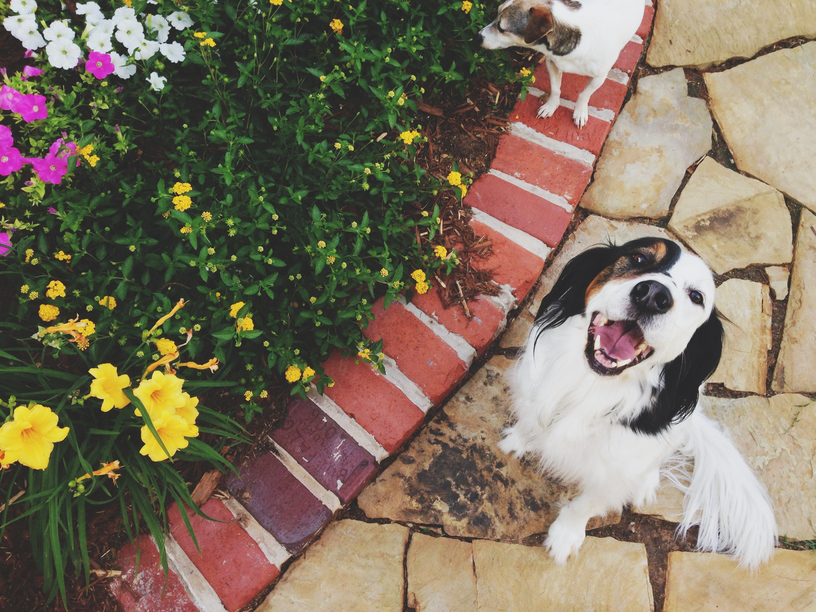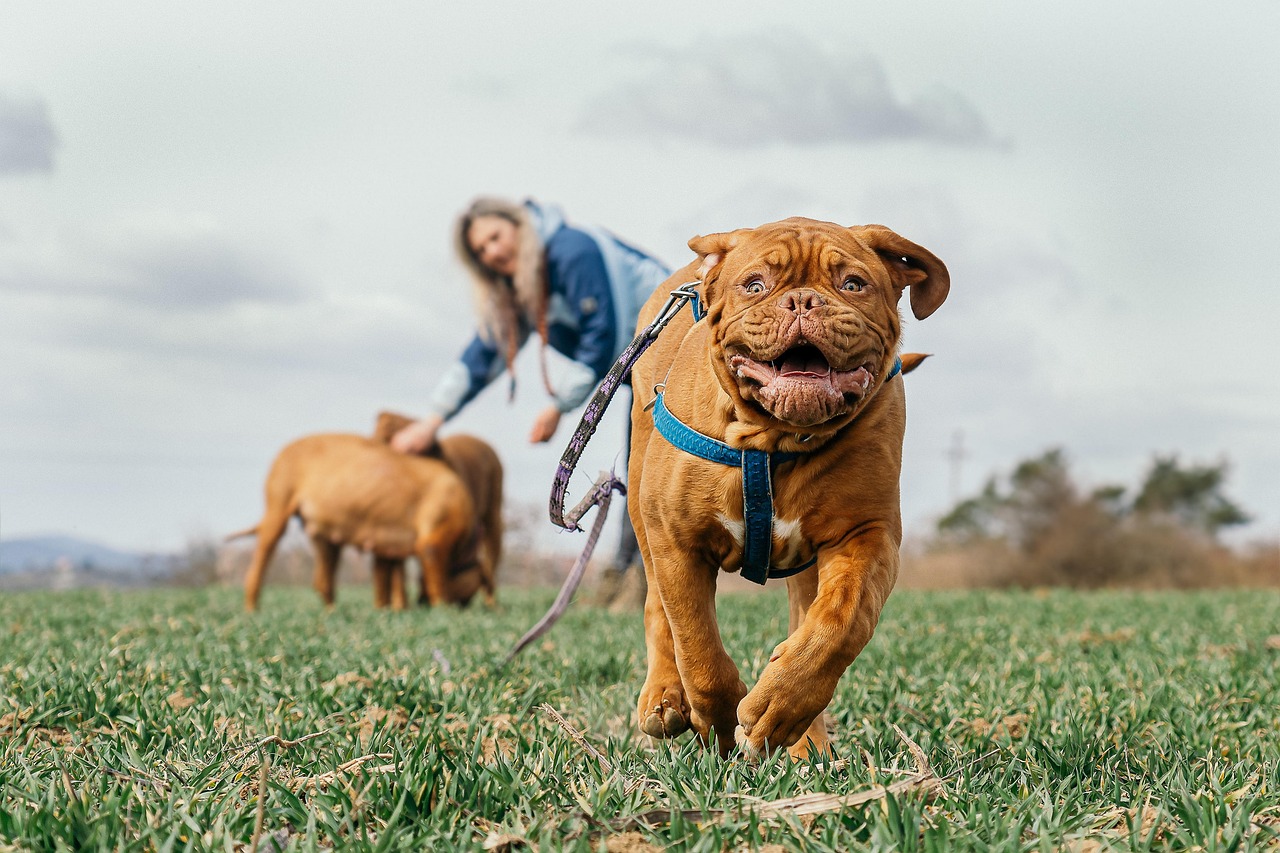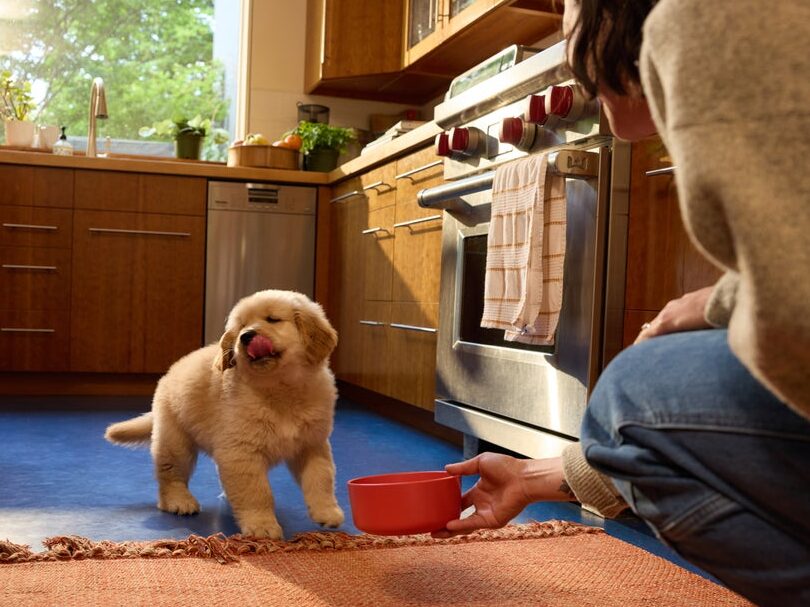Hey Ollie blog readers! We’re offering you an exclusive 60% OFF your starter box! Try now!
Ah, gardens. The perfect place for your pup to dig a (not-so-helpful) hole right next to where you’re planting those Zinnias for fall. While it may seem like a perfectly harmless pastime, digging in the dirt can have some unwanted consequences for dogs. Everything from fertilizers to pesticides to poisonous plants can be a problem for pups if exposed or ingested. Here are some of the most toxic things to steer clear of:
Chemicals and compost
Out of allllll the chemicals humans use in their gardens, rat poison and slug bait are two of the most harmful for pups. If you suspect your dog has eaten either, you have about an hour to get to a vet to treat them. If you’re a pet parent, it’s best to skip these insecticides and pesticides and look into more biodynamic, pet-friendly ways to keep your garden growing.
Fertilizers can also be problematic: if a large amount is eaten (the odor can sometimes be attractive to pets) it can cause vomiting, diarrhea, and pancreatitis in dogs. If you use fertilizer, it’s best to keep your pups away from treated areas until they are dry or rinsed into the lawn.
Compost has its own set of problems: it may contain poisonous food scraps, in addition to a specific toxin that occurs organically when food begins to break down. If you find your pet suddenly panting, drooling, and vomiting after being suspiciously close to your compost pile, get to the vet. Also, avoid dairy and meat products in your compost, and fence off the area so your curious pup can’t get into it.
Toxic plants
There are about 700 plants considered toxic to household pets—and pups have no idea which ones they are! Nor do most humans. The AKC’s Poisonous Plant Guide is based on research of common plants, and the Pet Poison Helpline has every poisonous substance categorized and searchable on their site.
Some of the most common plants and weeds to watch out for are sago palm, buttercups, poison hemlock, lilies, daffodils, narcissus, nightshade, and holly. As pretty as they are, amaryllis, azaleas, begonias, chrysanthemums, and daisies can also be harmful to pets, as can aloe and jade. Pups shouldn’t chew on specific veggies like tomatoes, rhubarb, garlic, or onions, either.
Symptoms of poisoning include hemorrhaging, seizures, tremors, drooling, and vomiting. Most vets recommend getting to an emergency veterinarian hospital within the first hour of exposure to fully treat and even save your pet’s life.
The best ways to stay safe
Most importantly, know what’s growing in your garden! If it’s toxic, either pull it or fence it off so your pup can’t get to it. Trying to avoid pesticides and herbicides, identifying potentially problematic weeds, and keeping tabs on “problem plants” requires diligence and a bit of research, but the safety of your dog is worth it.
Accidental ingestion of poisonous plants or chemicals can run anywhere from $500 to $2,000 and up depending on the treatment, and can be extremely stressful for your pet. Healthy Paws covers these accidental poisonings from the diagnostic testing to treatment to follow-up.
Content provided by Healthy Paws Pet Insurance. Healthy Paws is one of the leading pet insurance program providers in the U.S. for dogs and cats, and is ranked #1 by customers on leading review websites. Click here to get 10% off Healthy Paws pet insurance!
(Policies are underwritten and issued by ACE American Insurance Company, Indemnity Insurance Company of North America, ACE Property & Casualty Insurance Company, Atlantic Employers Insurance Company, members of the Chubb Group.)
The Ollie blog is devoted to helping pet parents lead healthier lives with their pups. If you want to learn more about our fresh, human-grade food, check out MyOllie.com.
Tagged As:

The nutrition your dog needs,
the food they want.

Enjoying our articles? Subscribe our Newsletters and get new articles directly to your inbox
You might also like
23 September 2025
6 MINS READ
Back to School: Training Your Dog at Any Age
As we hit back-to-school season rolls around, it’s not just kids who benefit from sharpening their skills and learning something new—our dogs can, too! Training isn’t limited to puppies or p…
by Ollie Pets
23 September 2025
7 MINS READ
Lace Up and Leash Up: A Beginner’s Guide to Running with Your Dog
Running is one of the simplest ways to stay active, and it’s even better with a canine companion. Not only does running with your dog keep you both in great shape, it also strengthens your bond …
by Ollie Pets
13 May 2025
8 MINS READ
Puppy Training Guide & Behavior Timeline
Bringing home a puppy is pure magic. It’s also pure chaos—tiny teeth, zoomies, accidents in the house, and moments that make you wonder if you’re raising a future genius or a tiny tornado. …
by Ollie Pets







